
The Karen National Union is a political organisation with an armed wing, the Karen National Liberation Army (KNLA), that claims to represent the Karen people of Myanmar (Burma). It operates in mountainous eastern Myanmar, and has underground networks in other areas of Myanmar where Karen people live as a minority group. In the Karen language, this area is called Kawthoolei.
The British Red Cross Society is the United Kingdom body of the worldwide neutral and impartial humanitarian network the International Red Cross and Red Crescent Movement. The society was formed in 1870, and is a registered charity with more than 17,200 volunteers and 3,400 staff. At the heart of their work is providing help to people in crisis, both in the UK and overseas. The Red Cross is committed to helping people without discrimination, regardless of their ethnic origin, nationality, political beliefs or religion. Queen Elizabeth II was the patron of the society until her death on 8 September 2022.

A combat medic is responsible for providing emergency medical treatment at a point of wounding in a combat or training environment, as well as primary care and health protection and evacuation from a point of injury or illness. Additionally, medics may also be responsible for the creation, oversight, and execution of long-term patient care plans in consultation with or in the absence of a readily available doctor or advanced practice provider. Combat medics may be used in hospitals and clinics, where they have the opportunity to work in additional roles, such as operating medical and laboratory equipment and performing and assisting with procedures.
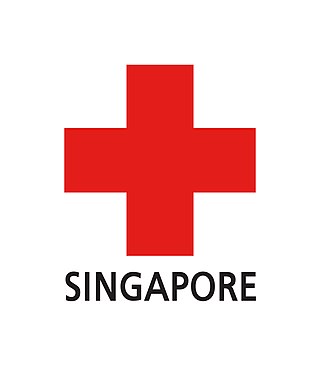
The Singapore Red Cross (SRC), formally the Singapore Red Cross Society, is a humanitarian aid and community services charity in Singapore. The SRC is a national member of the Federation of Red Cross and Red Crescent Societies (IFRC) and International Committee of the Red Cross (ICRC) and forms a part of the International Red Cross Movement.
The Cyprus Red Cross Society is the only Red Cross society in Cyprus recognised by the International Red Cross and Red Crescent Movement. The Headquarters of the Society are located in Nicosia.
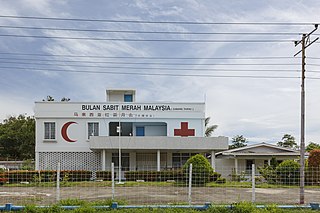
The Malaysian Red Crescent (MRC) is a voluntary humanitarian organization that seeks to promote humanitarian values, as well as provide service and public education in disaster management, as well as healthcare in the community. It is part of the International Red Cross and Red Crescent Movement.
St John Ambulance Ireland (SJAI), previously known as the St John Ambulance Brigade of Ireland, is a charitable voluntary organisation in Ireland. For constitutional reasons it is not a full member association of the Venerable Order of Saint John and the international St. John Ambulance movement, but rather is classed as an "associated body". The organisation is dedicated to the teaching and practice of medical first aid. It is engaged in first aid training to the public, providing first aid and ambulance cover at public events, patient transport and community services.

The Irish Red Cross Society is the National Red Cross Society for the Republic of Ireland. The society was formally established on 6 July 1939 under the Red Cross Act 1938. It is affiliated to the International Federation of Red Cross and Red Crescent Societies. The society is organised on a voluntary basis. In Ireland, its activities include mountain rescue, first aid education of the public, the provision of first aid and ambulance services at public events, as well as other community services for older people, carers, migrants and prisoners. Outside Ireland, the society provides relief and humanitarian services in response to natural disasters and in regions of conflict.
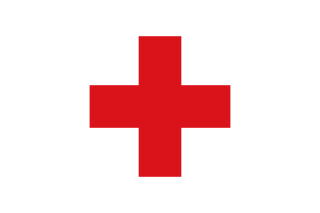
The Lebanese Red Cross (LRC) is a humanitarian organization and an auxiliary team to the medical service of the Lebanese Army. Its headquarters is in the Lebanese capital city of Beirut. Founded in 1945, the organization comprises a number of approximately 7,000 members/volunteers and 200 staff personnel. The society works with the International Federation and the ICRC, and on a bilateral basis with the Norwegian and the French Red Cross. The LRC also works with the relevant components of the Lebanese authorities, with UN agencies and NGOs.

Nepal Red Cross Society is an independent, volunteer-based and humanitarian organization that delivers humanitarian service and support to the vulnerable people in an impartial and neutral manner. It came into being on 4 September 1963. Nepal Red Cross Society was officially registered in Nepal after Nepal Government acceded to the Geneva Conventions. Having been recognized by the International Committee of the Red Cross (ICRC) and affiliated to International Federation of Red Cross and Red Crescent Societies (IFRC) on 1 October 1964.
The Trinidad and Tobago Red Cross Society (TTRCS) was founded on 12 July 1939 as a Branch of the British Red Cross Society. It has its headquarters in Port of Spain, with branches in the North and South of the island of Trinidad and one branch on the island of Tobago. Following the attainment of independence in 1962, the TTRCS became an Independent Society by Act No. 15 of 1963. On 8 August 1963, the TTRCS became part of the International Committee of the Red Cross and the International Federation of Red Cross and Red Crescent Societies. The Constitution of the Trinidad and Tobago Red Cross Society is based on the Geneva Conventions of 1949 and their additional Protocols of 1977 and the Fundamental Principles of the Red Cross Red Crescent Movement which are:

The Kachin Independence Army is a non-state armed group and the military wing of the Kachin Independence Organisation (KIO), a political group of ethnic Kachins in Northern Myanmar. The Kachins are a coalition of six tribes whose homeland encompasses territory in China's Yunnan, Northeast India and Kachin State in Myanmar.
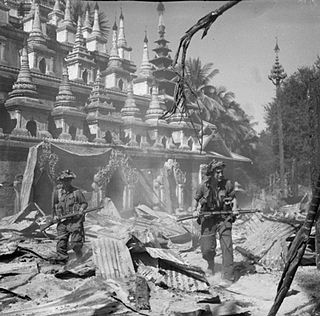
The Burma campaign in the South-East Asian Theatre of World War II was fought primarily by British Commonwealth, Chinese and United States forces against the forces of Imperial Japan, who were assisted by the Burmese National Army, the Indian National Army, and to some degree by Thailand. The British Commonwealth land forces were drawn primarily from the United Kingdom, British India and Africa.
Habib ur Rahman (1913–1978) was an army officer in the Indian National Army (INA) who was charged with "waging war against His Majesty the King Emperor". He served as Subhas Chandra Bose's chief of staff in Singapore, and accompanied Bose on his alleged last fatal flight from Taipei to Tokyo, sharing the last moments of his life. Rahman also played an important role in the First Kashmir War. Convinced that Maharaja Hari Singh was out to exterminate the Muslims of Jammu and Kashmir, he joined Major General Zaman Kiani, in launching a rebellion against the Maharaja from Gujrat in Pakistani Punjab. Rehman and his volunteer force launched an attack on the Bhimber town. But, the records of the 11th Cavalry of the Pakistan Army indicate that their efforts did not succeed, and eventually the Cavalry was responsible for conquering Bhimber.

The Indian Red Cross Society (IRCS) is a voluntary humanitarian organization to protect human life and health based in India. It is part of the International Red Cross and Red Crescent Movement and shares the Fundamental Principles of the International Red Cross and Red Crescent Movement. The society's mission is to provide relief in times of disasters/emergencies and promote health and care of vulnerable people and communities. It has a network of over 700 branches throughout India. The Society uses the Red Cross as an emblem in common with other international Red Cross societies. Volunteering has been at the very heart of the Indian Red Cross Society since its inception in 1920, with the Society having Youth and Junior volunteering programmes. The Society is closely associated with St John Ambulance India.
The Maldivian Red Crescent (MRC) is an independent, volunteer, non-profit, humanitarian organization established in the Maldives by virture of the Maldivian Red Crescent Act Law No: 7/2009
St. John Ambulance India is the first aid, ambulance and nursing wing of the Indian Red Cross Society. It arose as the local Indian branch of the international St. John Ambulance movement headquartered in the United Kingdom, but in the years since Indian independence it has severed official links with the Order of St John. It has its national headquarters in Delhi and operates as a federation. There are two operational wings often called the Association Wing and the Brigade Wing.
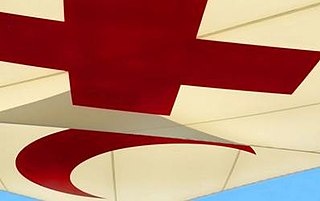
The Standing Commission of the Red Cross and Red Crescent is the permanent statutory body of the International Red Cross and Red Crescent Movement and the highest deliberative body of the Movement between the meetings of the Council of Delegates and the International Conference of the Red Cross and Red Crescent. It was originally set up to coordinate cooperation between the International Committee of the Red Cross and the International Federation of Red Cross and Red Crescent Societies.
The New Year Honours 1920 were appointments by King George V to various orders and honours to reward and highlight good works by members of the British Empire. They were published on 1 January 1920 and 30 March 1920.
The Honduran Red Cross is a non-profit institution of social and voluntary organization that provides help to at-risk populations and those affected by disasters. It is part of the international organization Red Cross and Half Moon Red Crescent, which was founded to protect human life and health, to ensure respect for all human beings, and to prevent and alleviate human suffering.










